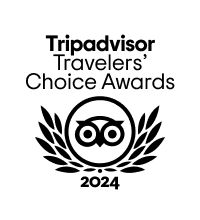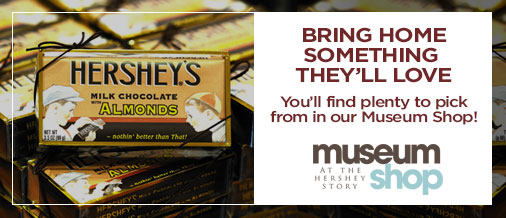The Original American Spymaster: 1st Place – Grace Stewart, Camp Hill Middle School
A fascinating exhibit at Mount Vernon about spying during the Revolutionary War caught my eye when I visited two years ago. The exhibit featured a woman, Lydia Darragh, who helped General George Washington by being one of his spies. She would eavesdrop on conversations that British officers were having regarding military strategy. She would then handwrite messages on scraps of paper, sew them into the buttons in her son’s coat. Then, her son would sneak through British lines and deliver the information to Washington. This was just one of many techniques Washington used to help America win the War.
I learned through reading the book by Thomas B. Allen, “George Washington, Spymaster How the Americans Outspied the British and Won the Revolutionary War”, and visiting National Parks like Valley Forge, Morristown National Historic Park, Boston’s Freedom Trail, Fort Necessity and Independence Hall what difficulties the Continental Army faced and what a good choice it was by Congress to pick George Washington as commander. Part of the reason that Washington successfully defeated the British in the Revolutionary War was his great ability to gather intelligence about the British military through a network of spies.
In fact, in his book, Allen says that George Washington was really commanding two armies to win the war: an invisible army (spies) and the visible army (troops). Most spies were very clever and good counterfeiters and moles. In addition, I learned that some famous people or groups spied or help spies on behalf of our country, like Thomas Jefferson, Paul Revere, Sons of Liberty, Ben Franklin, the Culper Ring, Committee of Secret Correspondence, Committee of Safety, Robert Townsend and Anna Strong. Washington’s brilliant efforts as spymaster created the first type of American intelligence agencies or group of people that gathered information about the enemy. Today, some of the same espionage techniques are used by the FBI, CIA, Navy Intelligence, National Security Council and other organizations.
Some of the methods used by Washington’s spies were invisible ink, masks, book codes, ciphers and even laundry hung outside to dry. George Washington and others used invisible ink to share messages. There were three different types of invisible ink, the first being lemon juice. To reveal the message, the reader would have to heat the paper, and the clear “ink” would appear, turning a brown color. In addition to lemon juice, there was also another type of ink that when it was to appear, the reader had to put a common acid on the paper. An officer told his agents to put an a in the top corner if the ink needed acid, and an f if the ink needed fire or heat to make the secret message appear to the reader. A different type of chemical, known as a sympathetic stain, was rubbed on paper to reveal a secret message that was written in between the lines of a normal looking letter.
Another code, not written in invisible ink, is the “Book Code” which is when three numbers make-up a word. First, the two people exchanging the code must have the same master book. The first number would mean the page of the book, the second the line it was on, and the third, is the word on the line, counting from the left. This code was incredibly hard to make and time-consuming, but it was worth it because hardly anyone could crack it.
Another spy method is called “masking”. This is a way of sending messages in an ordinary letter. A secret message would be spread out among the sentences in the letter. A spy mask is a tool that was a special cutout that you had to write within and fill in the leftover space. This was like a stencil, and it only lets the important message show through. Spies even filled in the outside of the mask with fake information to throw off the enemy if it got into their hands.
One unique method to signal to the Americans of secret information obtained about the British was to hang laundry on the line in a certain sequence or pattern. Anna Strong would signal Washington’s officers where and when to meet so that the secrets she learned could be passed on to Washington. The color of the clothing or the sequence that the clothing was displayed on the clothesline outside her house would give clues about the place and time to meet to get the information. I have always marveled at how colonial spies had really excellent ideas on how to communicate using such fabulous methods such as the cloth buttons or sympathetic stains.
Colonial spying was complex and George Washington knew it was really important to winning the war. After visiting both Valley Forge and Morristown I truly understood the terrible conditions that the Continental Army faced not having enough food, gunpowder, boots, uniforms, shelter or money and facing harsh winter conditions and disease. It was clear to Washington that he wasn’t going to win this war with troops alone.
Lastly, George Washington was clever enough to know that purposely sending out misinformation to mislead the British about his military strategy was very helpful. The best example of this was when he made sure that the British Officer General Clinton gained incorrect information that French troops were headed to Long Island and not Rhode Island. The redcoats took the bait and sailed away from Newport. This allowed the French, which were coming to Newport to help the Americans, to safely land.
George Washington was a fascinating man. From being the first president of the United States to being one of the most famous war heroes in history, he is known by all for these accomplishments. However, I wanted to discuss the famous Washington for a completely different reason—his talent of spying. If he hadn’t been a fantastic spymaster, the United States probably wouldn’t have won the Revolutionary War.
Bibliography
- Allen, Thomas B. George Washington, Spymaster, How the Americans Outspied the British and Won the Revolutionary War. Wasington D.C.: National Geographic adjbaobSociety, 2004. Print.
- Murphy, Jim. The Crossing. New York: Scholastic Press, 2010. Print.
- “George Washington, Spymaster.” www.mountvernon.org. Mount Vernon Ladies’ Association. 2015. Web. 8 February 2015.


